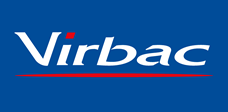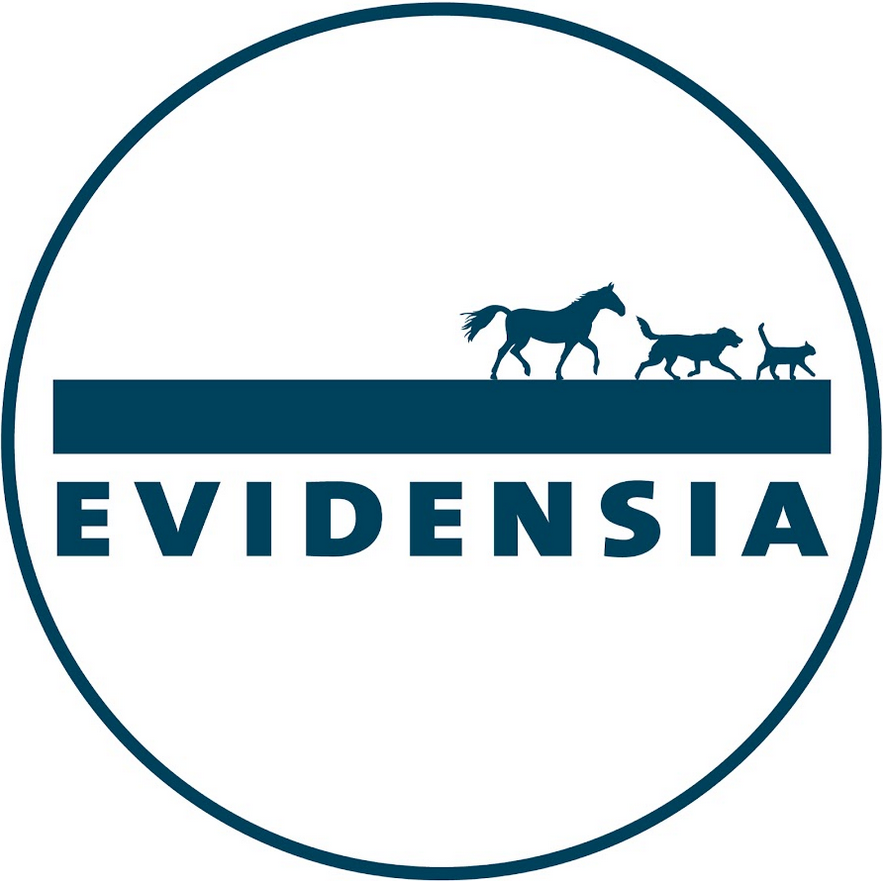Combination therapy
No results were found for your selected species
Poulvac Bursine 2
ATC code
Species
Chickens (broilers and future layers/breeders).
Indications
For the active immunisation of broilers, and future layers/breeders to reduce clinical signs caused by Infectious Bursal Disease virus.
Dose to be administered and administration route
Coarse spray or in drinking water use.
Vaccination schedule:
Future layers/breeders:
Administer via drinking water.
One dose to chickens at 7 to 28 days of age. A second vaccination should be administered at 7 to 10 days after the first vaccination.
Broilers:
Administer via spray or drinking water.
One dose to chickens from 1 day of age.
Depending on the level of field virus present, repeat administration of the vaccine may be required at 7 to 10 days after the first vaccination. If not vaccinated at day old, it is recommended to determine the date of first vaccination according to the level of maternally derived antibodies (MDAs).
Nipple-drinking systems are not an appropriate method of vaccine delivery for 1-3 day old chicks.
Reconstitution of vaccine:
Upon reconstitution, light peach to a tan-brownish suspension depending on volume of water added.
Fill a container with an appropriate amount of preferably cold, fresh, nonchlorinated water that is free from metal-ions. Chlorine at levels as low as 1 ppm is known to have a detrimental effect on vaccine virus stability, therefore it’s recommended for drinking water application to add low-fat skimmed milk powder (i.e. < 1% fat, 2–4 grams per litre) or skimmed milk (20–40 ml per litre of water) to the water to prolong the life of the virus in the vaccine suspension. Only skimmed milk should be used, as the fat in whole milk may block the automatic drinking systems as well as reduce vaccine virus efficacy. After mixing, the solution should be allowed to stand for 15–30 minutes before adding the vaccine.
Remove the cap of the vaccine vial. Open the vaccine vial under water and dissolve thoroughly in the container. Empty the vaccine vial completely by rinsing the vial and the stopper in the water.
Administer to birds immediately after dilution.
Avoid exposure of the vaccine suspension to sunlight.
Drinking water:
Make sure that all conduit pipes, tubing, troughs, drinkers etc are thoroughly clean and free of any trace of disinfectants, detergents, soap, etc. Contact with disinfectants makes the vaccine ineffective.
Allow water to be consumed so that levels in drinkers are minimal before vaccine is applied. All tubing should be emptied of plain water, so that the drinkers contain only vaccine water. It may be necessary to withhold water prior to vaccination in order to ensure that all birds drink during the vaccination period. Ideally, vaccine should be administered in the volume of water consumed by the birds in up to 3 hours. The aim is to give every bird one dose of vaccine. As a general rule, apply reconstituted vaccine to chlorine-free and fresh water at the rate of 1,000 doses of the vaccine to 1 litre of water per day of age for 1,000 chickens, e.g. 10 litres would be needed for 1,000 10-day old chickens. If in doubt, measure water intake the day before administering vaccine.
Coarse Spray:
This method is for day old broiler chicks only and may be used in the hatchery or on farm.
Use clean vaccination materials only. No disinfectants or other substances impairing the performance of the live vaccine should be used in the sprayer.
Dilute and administer the reconstituted vaccine at a rate of one dose of reconstituted vaccine per bird, according to the directions of your specific coarse spray vaccination equipment. The recommended volume for 1 dose is between 0.1 and 0.5 ml. The spraying distance should be between 30 and 80 cm above the animals in order to ensure an even distribution and the recommended droplet size is greater than 100 µm.
Turn off ventilation during vaccination.
Ensure that birds are neither overheated nor chilled following coarse spray.
Adverse reactions
Chickens (broilers and future layers/breeders):
|
Very common (>1 animal / 10 animals treated): |
Bursal of Fabricius degeneration1, Other immune system disorder1 |
|
Very rare (<1 animal / 10,000 animals treated, including isolated reports): |
Application site reaction2, Avian systemic disorder2 |
1The veterinary medicinal product produces increasing bursal damage on bird to bird passage and this is accompanied by a degree of immunosuppression.
2Reactions are usually transient.
Reporting adverse events is important. It allows continuous safety monitoring of a veterinary medicinal product. Reports should be sent, preferably via a veterinarian, to either the marketing authorisation holder or the national competent authority via the national reporting system. See the package leaflet for respective contact details.
Dispensing
POM-V - Prescription Only Medicine – VeterinarianSUMMARY OF PRODUCT CHARACTERISTICS
1. NAME OF THE VETERINARY MEDICINAL PRODUCT
Poulvac Bursine 2 lyophilisate for suspension for spray vaccination or for use in drinking water for chickens
2. QUALITATIVE AND QUANTITATIVE COMPOSITION
One dose contains:
Active substances:
Live attenuated Infectious Bursal Disease virus strain Lukert:
≥104.3 TCID50*
*TCID50 = 50% tissue culture infective dose Excipients:
For the full list of excipients, see section 6.1.
3. PHARMACEUTICAL FORM
Lyophilisate for suspension for spray vaccination or for use in drinking water.
Beige to mid-brown, lyophilized.
4. CLINICAL PARTICULARS
4.1 Target species
Chickens (broilers and future layers/breeders).
4.2 Indications for use, specifying the target species
For the active immunization of broilers, and future layers/breeders to reduce clinical signs caused by Infectious Bursal Disease virus.
4.3 Contraindications
None.
4.4 Special warnings for each target species
Vaccinate healthy animals only.
Maternally derived antibodies (MDA) can interfere with the development of active immunity. Where it is likely that recent field infection or vaccination of the parent flock has stimulated a high antibody titre and consequently a high level of MDA, the timing of the vaccination programme should be planned accordingly.
Very virulent Infectious Bursal Disease virus can breakthrough higher maternal antibody levels than vaccine virus.
Field infection is capable therefore of reaching birds before vaccine has a chance to take. Only use as part of a complete Infectious Bursal Disease control programme involving hygiene, biosecurity, management, stocking density and disinfection, etc. Overwhelming levels of field virus may overcome vaccinal immunity.
4.5 Special precautions for use
Special precautions for use in animals
The vaccine virus can spread to in contact birds.
Care should be taken to ensure that the vaccine virus does not spread to unvaccinated birds. It is recommended to vaccinate all chickens on a site at the same time. Cleaning and disinfection of the premises is advisable between flocks.
Special precautions to be taken by the person administering the veterinary medicinal product to animals
If spray vaccination is applied, the user must at least protect their eyes with safety goggles and nose and mouth with a dust mask. A helmet with filtered air circulation may be used instead. It is recommended to wash and disinfect hands and equipment after vaccinating.
4.6 Adverse reactions (frequency and seriousness)
Local and/or general reactions after administration of the vaccine can be observed very rarely. Reactions are usually transient.
Poulvac Bursine 2 produces increasing bursal damage on bird to bird passage and this is accompanied by a degree of immunosuppression.
The frequency of adverse reactions is defined using the following convention: - very common (more than 1 in 10 animals treated displaying adverse reaction(s))
- common (more than 1 but less than 10 animals in 100 animals treated)
- uncommon (more than 1 but less than 10 animals in 1,000 animals treated)
- rare (more than 1 but less than 10 animals in 10,000 animals treated)
- very rare (less than 1 animal in 10,000 animals treated, including isolated reports).
4.7 Use during pregnancy, lactation or lay
Do not use in birds in lay and within 4 weeks before the start of the laying period.
4.8 Interaction with other medicinal products and other forms of
interaction
No information is available on the safety and efficacy of this vaccine when used with any other veterinary medicinal product, except for the concurrent use with Poulvac IB H120 administered to broilers at 1 day of age. A decision to use this vaccine before or after any other veterinary medicinal product, besides Poulvac IB H120, therefore needs to be made on a case by case basis.
4.9 Amounts to be administered and administration route
Coarse spray or in drinking water use
Vaccination schedule:
Future layers/breeders:
Administer via drinking water.
One dose to chickens at 7 to 28 days of age. A second vaccination should be administered at 7 to 10 days after the first vaccination.
Broilers:
Administer via spray or drinking water.
One dose to chickens from 1 day of age.
Depending on the level of field virus present, repeat administration of the vaccine may be required at 7 to 10 days after the first vaccination. If not vaccinated at day old, it is recommended to determine the date of first vaccination according to the level of maternally derived antibodies (MDAs).
Nipple-drinking systems are not an appropriate method of vaccine delivery for 1-3 day old chicks.
Reconstitution of vaccine:
Upon reconstitution, light peach to a tan-brownish suspension depending on volume of water added.
Fill a container with an appropriate amount of preferably cold, fresh, nonchlorinated water that is free from metal-ions. Chlorine at levels as low as 1 ppm is known to have a detrimental effect on vaccine virus stability, therefore it’s recommended for drinking water application to add low-fat skimmed milk powder (i.e. < 1% fat, 2–4 grams per litre) or skimmed milk (20–40 ml per litre of water) to the water to prolong the life of the virus in the vaccine suspension. Only skimmed milk should be used, as the fat in whole milk may block the automatic drinking systems as well as reduce vaccine virus efficacy. After mixing, the solution should be allowed to stand for 15–30 minutes before adding the vaccine.
Remove the cap of the vaccine vial. Open the vaccine vial under water and dissolve thoroughly in the container. Empty the vaccine vial completely by rinsing the vial and the stopper in the water.
Administer to birds immediately after dilution.
Avoid exposure of the vaccine suspension to sunlight.
Drinking water:
Make sure that all conduit pipes, tubing, troughs, drinkers etc are thoroughly clean and free of any trace of disinfectants, detergents, soap, etc. Contact with disinfectants makes the vaccine ineffective.
Allow water to be consumed so that levels in drinkers are minimal before vaccine is applied. All tubing should be emptied of plain water, so that the drinkers contain only vaccine water. It may be necessary to withhold water prior to vaccination in order to ensure that all birds drink during the vaccination period. Ideally, vaccine should be administered in the volume of water consumed by the birds in up to 3 hours. The aim is to give every bird one dose of vaccine. As a general rule, apply reconstituted vaccine to chlorine-free and fresh water at the rate of 1,000 doses of the vaccine to 1 litre of water per day of age for 1,000 chickens, e.g. 10 litres would be needed for 1,000 10-day old chickens. If in doubt, measure water intake the day before administering vaccine.
Coarse Spray:
This method is for day old broiler chicks only and may be used in the hatchery or on farm.
Use clean vaccination materials only. No disinfectants or other substances impairing the performance of the live vaccine should be used in the sprayer.
Dilute and administer the reconstituted vaccine at a rate of one dose of reconstituted vaccine per bird, according to the directions of your specific coarse spray vaccination equipment. The recommended volume for 1 dose is between 0.1 and 0.5 ml. The spraying distance should be between 30 and 80 cm above the animals in order to ensure an even distribution and the recommended droplet size is greater than 100 µm.
Turn off ventilation during vaccination.
Ensure that birds are neither overheated nor chilled following coarse spray.
4.10 Overdose (symptoms, emergency procedures, antidotes), if necessary
No reactions other than those reported following a single dose are expected after an overdose.
4.11 Withdrawal period(s)
Zero days
5. IMMUNOLOGICAL PROPERTIES
To stimulate active immunity against Infectious Bursal Disease virus (Gumboro Disease).
The vaccine contains the live intermediate IBDV strain Lukert.
Pharmacotherapeutic group: immunologicals for Aves, live viral vaccines for domestic fowl
ATC vet code: QI01AD09
6. PHARMACEUTICAL PARTICULARS
6.1 List of excipients
Sucrose
Sodium dihydrogen phosphate dihydrate
Dipotassium phosphate Bovine Serum Albumin
6.2 Major incompatibilities
Do not mix with any other veterinary medicinal product.
6.3 Shelf life
Shelf-life of the veterinary medicinal product as packaged for sale: 27 months
Shelf-life after reconstitution according to directions: 4 hours
6.4 Special precautions for storage
Store and transport refrigerated (2°C - 8°C). Protect from light.
6.5 Nature and composition of immediate packaging
|
Nature: |
Hydrolytic Type I glass (Ph. Eur.) vial |
|
Closure: |
Type I butyl rubber (Ph. Eur.) stoppers. |
|
Pack sizes: |
10 x 1000, 2000, 2500, 5000 and 10,000 doses. |
Not all pack sizes may be marketed.
6.6 Special precautions for the disposal of unused veterinary medicinal product or waste materials derived from the use of such products
Any unused veterinary medicinal product or waste materials derived from such veterinary medicinal product should be disposed of in accordance with local requirements.
7. MARKETING AUTHORISATION HOLDER
Zoetis UK Limited
1st Floor, Birchwood Building
Springfield Drive
Leatherhead
Surrey
KT22 7LP
8. MARKETING AUTHORISATION NUMBER
Vm 42058/4099
9. DATE OF FIRST AUTHORISATION
21 March 1994
10. DATE OF REVISION OF THE TEXT
July 2022
Approved 28 July 2022


| Art. Nr. | 42058/5137 |
|---|---|
| EAN | 8714015011785 |
 TRUSTED SOURCE
TRUSTED SOURCE








